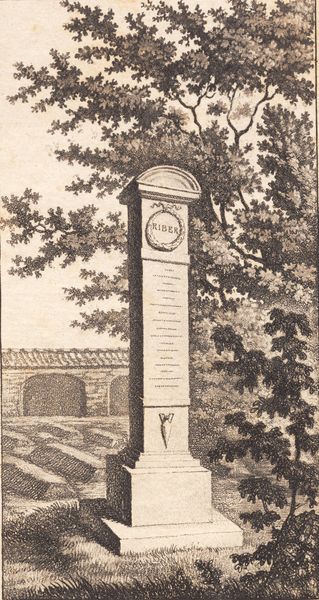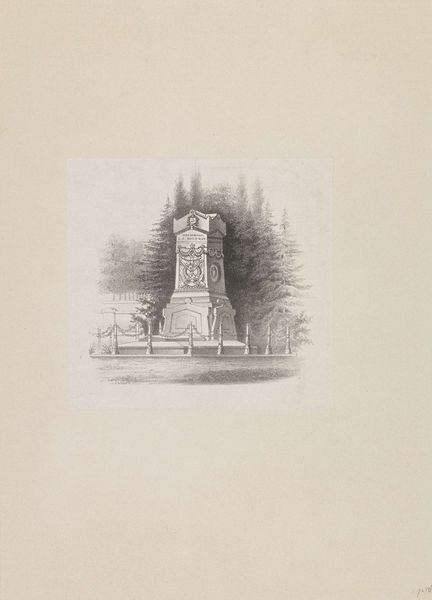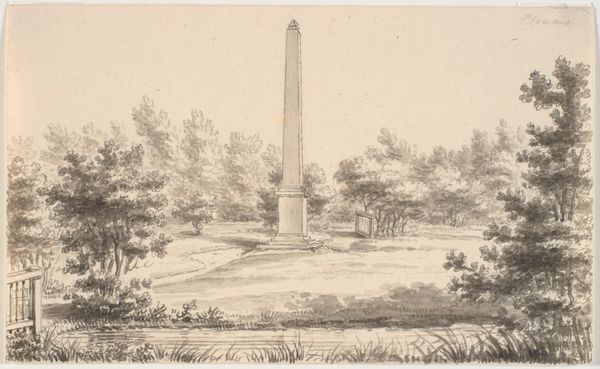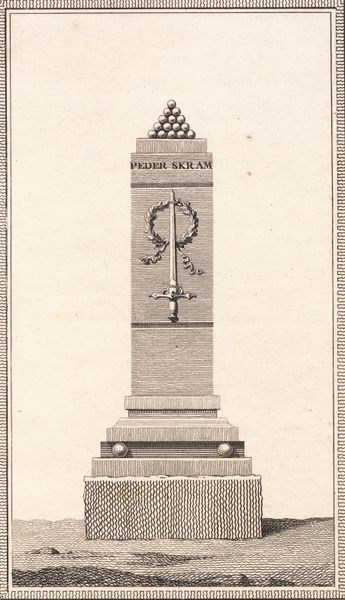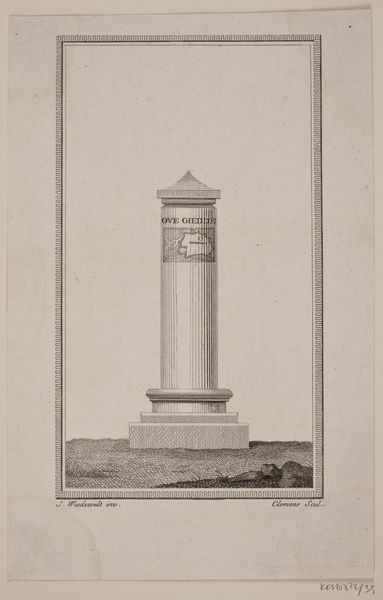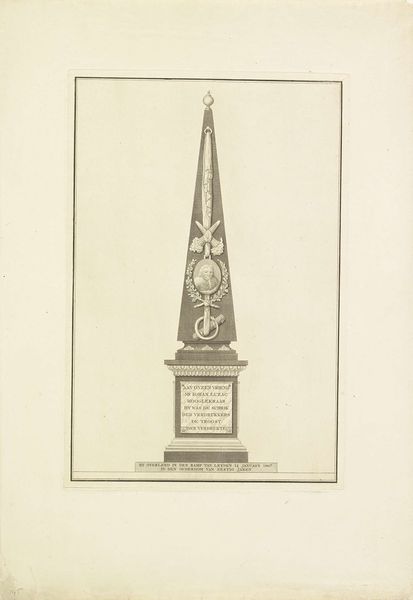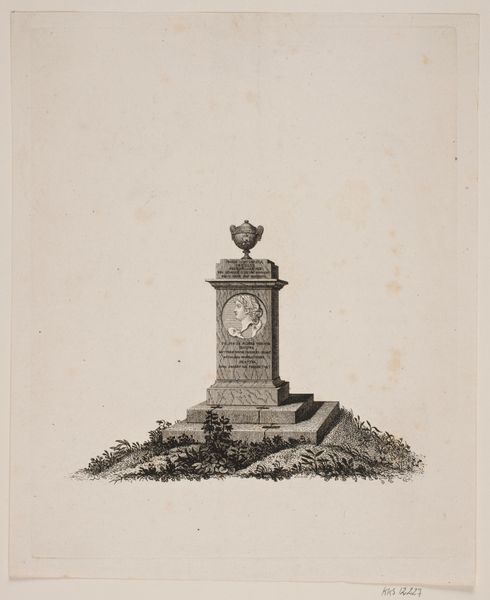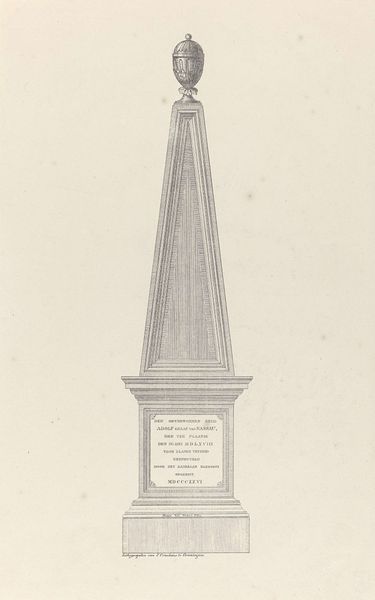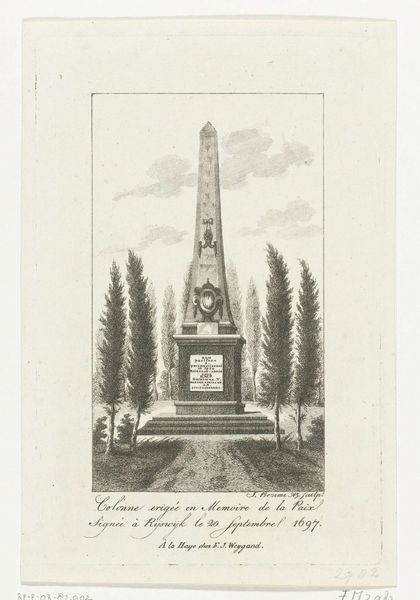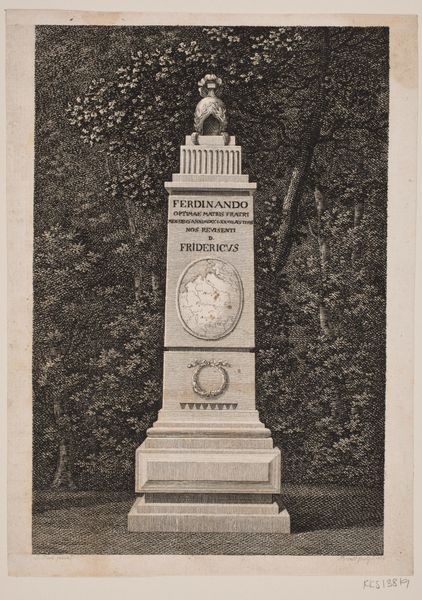
aquatint, print, metal, etching, engraving
#
aquatint
# print
#
metal
#
etching
#
landscape
#
romanticism
#
19th century
#
engraving
Dimensions: 195 mm (height) x 137 mm (width) (bladmaal), 154 mm (height) x 99 mm (width) (plademaal), 125 mm (height) x 67 mm (width) (billedmaal)
J.F. Clemens created this print called Mindestøtten for Riber using etching, a type of printmaking, in Denmark. This image, which depicts a monument surrounded by trees, is likely a tribute to someone or something significant to the town of Ribe. In eighteenth-century Europe, monuments and memorials were becoming increasingly popular as ways to express national identity and civic pride. The clean, classical lines of the monument, combined with the wreath, evoke a sense of order and rationality, values that were central to the Enlightenment. To understand this work more fully, you might research the history of Ribe and the figures associated with it. Were there particular events or individuals that shaped the town's identity during this time? Also, considering the status of Clemens as an artist working in Denmark, what was the role of art institutions in shaping national identity at this time?
Comments
No comments
Be the first to comment and join the conversation on the ultimate creative platform.
